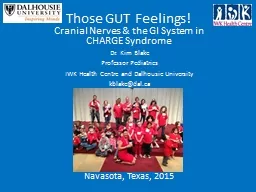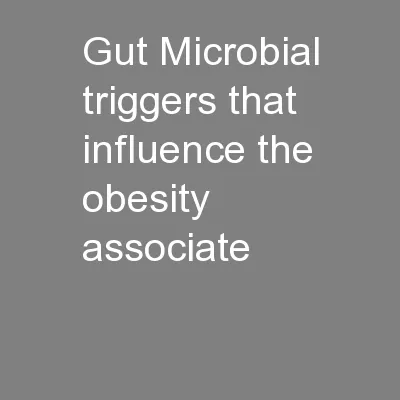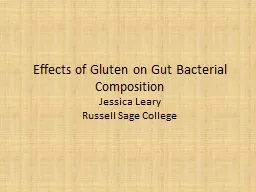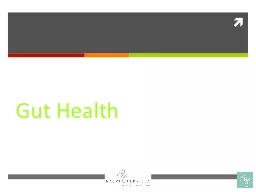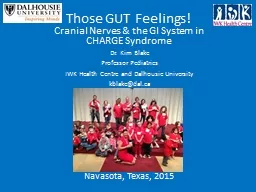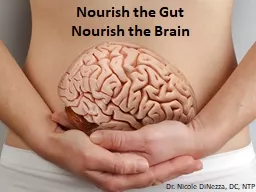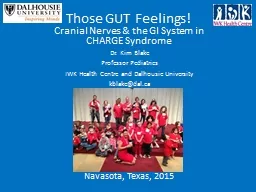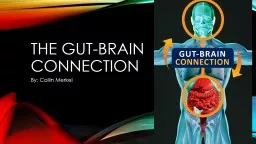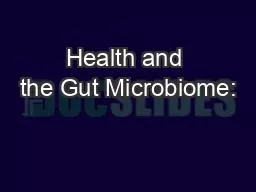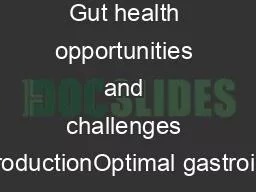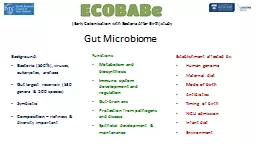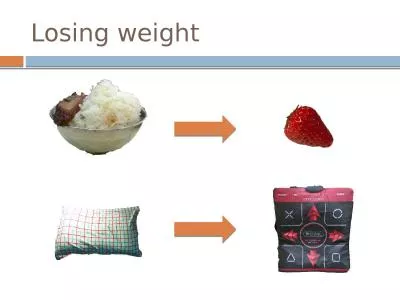PPT-Those GUT Feelings!
Author : tatiana-dople | Published Date : 2019-11-08
Those GUT Feelings Cranial Nerves amp th e GI System in CHARGE Syndrome Dr Kim Blake Professor Pediatrics IWK Health Centre and Dalhousie University kblakedalca
Presentation Embed Code
Download Presentation
Download Presentation The PPT/PDF document "Those GUT Feelings!" is the property of its rightful owner. Permission is granted to download and print the materials on this website for personal, non-commercial use only, and to display it on your personal computer provided you do not modify the materials and that you retain all copyright notices contained in the materials. By downloading content from our website, you accept the terms of this agreement.
Those GUT Feelings!: Transcript
Download Rules Of Document
"Those GUT Feelings!"The content belongs to its owner. You may download and print it for personal use, without modification, and keep all copyright notices. By downloading, you agree to these terms.
Related Documents

